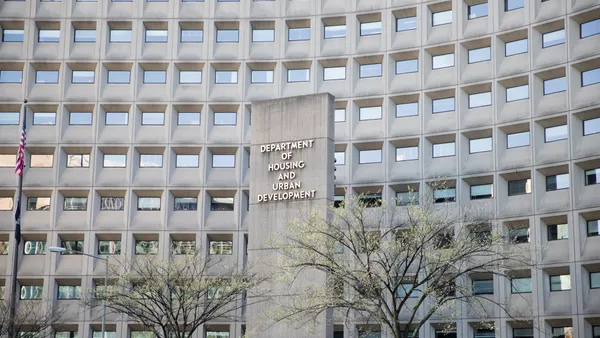Managed retreat as a climate adaptation strategy is a thorny subject, but the practice of permanently moving people and infrastructure out of high-risk areas may gain favor in coming years, says Erica Bower, a climate change and human mobility expert currently pursuing her Ph.D. at Stanford University.
“I don't subscribe to the idea that sea-level rise will make places fundamentally uninhabitable and everyone will have to move,” she said of managed retreat, also known as planned relocation. “I do think [planned relocation is] a strategy, challenging as it is, that will become more and more popular.”
A crucial question is how planned relocation can result in positive outcomes for communities, including financially, physically and culturally. Bower and a team of Stanford researchers set out to answer that question in a paper published last month in Nature Climate Change, examining 14 communities around the world that have completed flood-related planned relocation. Although they are rural, the communities — from Allenville, Arizona, to Vunidogoloa, Fiji — may hold key lessons for urban communities, Bower said.

“This is the question that every city with a coastline is going to have to grapple with in the next 100 years,” Bower said.
Smart Cities Dive spoke with Bower about her research findings, how managed retreat might unfold in U.S. cities and what role government officials have in making sure it goes as smoothly as possible.
Editor’s note: This interview has been edited for length and clarity.
SMART CITIES DIVE: What are the main takeaways from your research?
ERICA BOWER: Relocation is not always the answer, but there are contexts when communities do initiate these processes and when it is actually something that people want. Everything that follows is based on that assumption that this is something that's desirable.
First and foremost, community engagement really matters. When community members are the ones that decide whether to move, how to move, where to move, when to move, rather than a government actor or an external stakeholder, better outcomes ensue.
In this paper, we discovered some key differences [between] small and for large communities. When it's a really large community that's trying to relocate, it seems as though faster timelines lead to better outcomes. In contrast, smaller communities, maybe some portion of a neighborhood in the city, often wanted to relocate on longer time horizons. [Particularly for smaller communities,] it was really important that there were measures to ensure community coherence. People would stay together in interim housing, for example, between when they were displaced and moved to a new place. In the new site, they named certain schools and roads the same names they had before moving.
The third main finding from this paper — which was counterintuitive, it actually really surprised me — was that distance didn't matter as much as we expected it would. There's a range of reasons for this. These 14 cases all involve relatively small distances, ranging up to 16 kilometers [about 10 miles] at the largest. Within the sample, it's also possible that elevation change matters a lot more than physical distance. If you move just half a kilometer [0.3 miles], but it's from a low-lying area to the top of the bluff, that could have a huge impact in terms of risk reduction. And finally, we found that distance can be measured by a lot of metrics other than just kilometers or miles, right? You can think about distance in terms of cultural or jurisdictional definitions. If you're in the same neighborhood, even if it's a giant neighborhood, that matters a lot — if you have the same mayor or are in the same electoral block.
At the end of the day, what's most important as a finding of this paper is just that we need to learn lessons from the past to inform future decision-making about climate adaptation broadly, and specifically relocation planning.
The research shows that planned relocation is more successful if it is the community’s idea. But what do you do if you work in local government and you see the data that certain areas will be really risky for people to continue living in?
Planned relocation should never be the only option. It should be one among a suite of in situ adaptation strategies as well. So putting a house on stilts, measures to protect a community like a seawall. It should be an open conversation where communities are informed about the range of options and then given their own time and space to come to conclusions about what makes sense.
Buyouts are one way that the federal government currently tries to help people move away from high-risk areas. Do you have any thoughts about how buyouts compare to planned relocation?
Buyout processes take a long time, and there's often not adequate governance support when administrations change or when people's priorities in the community change. Buyouts are often at the individual household scale. A family is given money, but they're not told where to go, whereas a community-planned relocation is about that same village, that same town or neighborhood, in a new place.
That only really makes sense in places where the community wants to stay together. I don't know my neighbors particularly well, I don't know if it really matters to me whether or not I live next to Joe and Susan. I think in Indigenous communities and communities that are really tied together for other reasons, like economic livelihoods because they're all fisherfolk, or where there's a really strong school district, whatever it is, that's the circumstances where this wholesale community move really makes sense.
One of the skepticisms I’ve heard about planned relocation in urban environments is that there’s no space within the community to send people to.
Yeah, I mean, [with] gentrification and overpopulation, there’s just no space, which is why I think an individual household buyout approach might make more sense in an urban context.
This research looks at communities around the world. How does the U.S. perspective on planned relocation differ from other global perspectives on the issue?
In the U.S., it’s often called managed retreat, whereas in the global context, it’s more often referred to as planned relocation. That’s important for a few reasons. The word management seems to imply that it’s always a top-down process — a government managing a population — whereas “planned” could come from the top or it could emerge from the community itself. I think terminology really matters because it influences how policies are constructed, how people see the phenomenon, their willingness to engage and to see it as a good thing for them.
Another key difference is that in other parts of the world, this is seen as an opportunity to get international aid and funding. Whereas in the U.S., there is no expectation that Canada would donate any money.
Should state governments or the federal government step in to help local governments navigate planned relocation?
There's evidence to suggest that adaptation works best when it happens in a polycentric governance scheme involving many scales of government. So absolutely there is a role for a national policy in the United States.
The policy that Fiji has developed is quite sophisticated and quite impressive. I think it would behoove the U.S. to have a similar level of standard operating procedures and governance at a national level. That does not replace local and state-level government action. At the end of the day, those are the stakeholders that need to be most engaged, but they often need money, and that often comes from the national pot.











